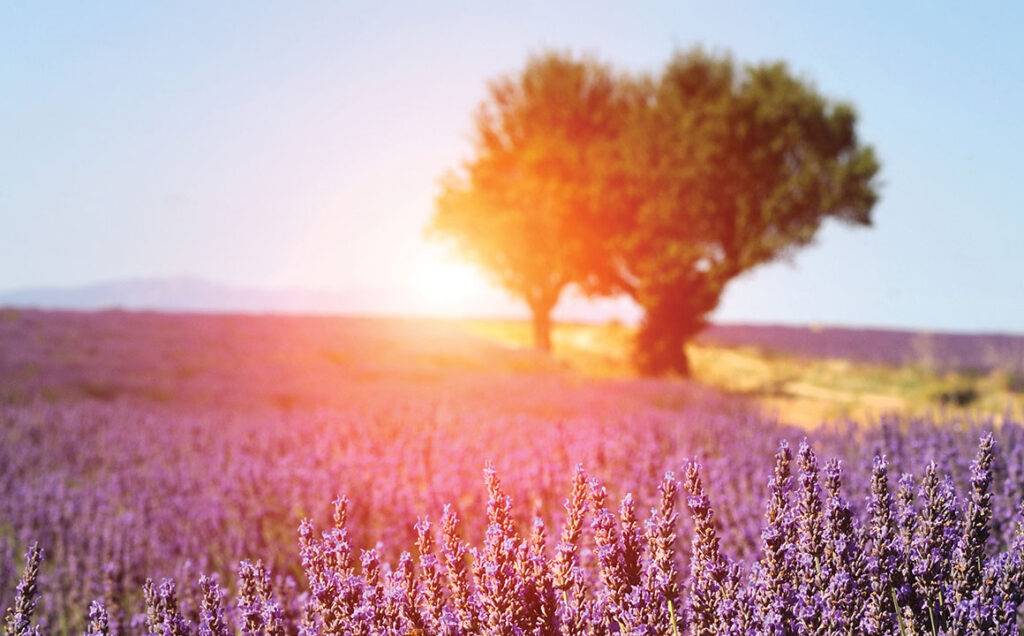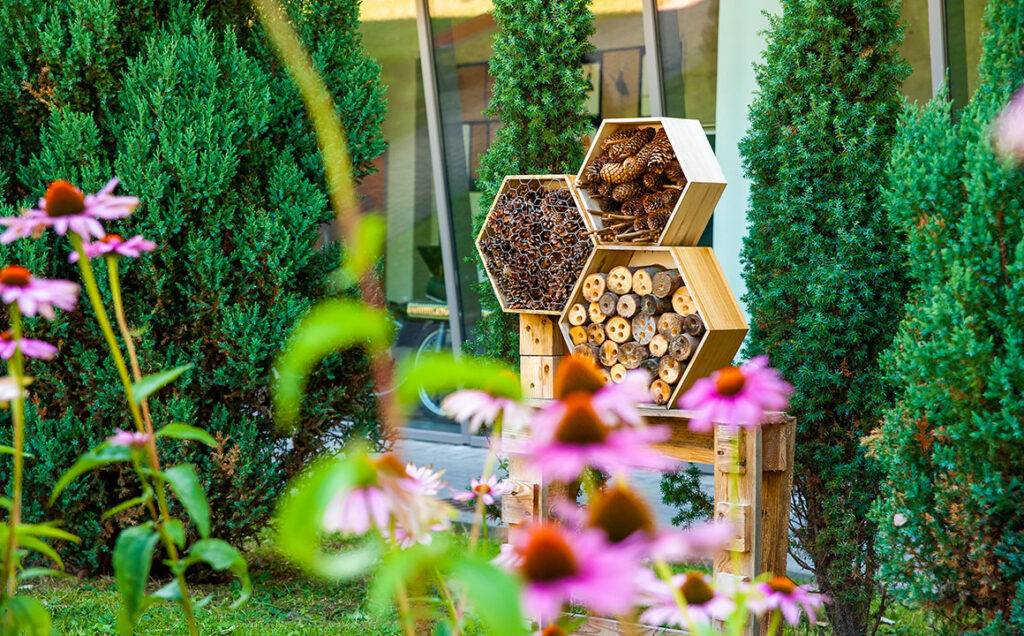Bees are unbelievably important for our ecosystem, but you probably already know that. That’s why we have to treat them with kindness and respect. And what better way is there to do that than with a bee-friendly garden? That will not only enhance the beauty of your outdoor space but also contribute to the preservation of these essential creatures. So, if you want to learn how to create a bee-friendly garden yourself, here are the easiest ways to do that!
Flower power
When it comes to attracting bees, certain flowers are particularly irresistible. Opt for colorful blossoms with open shapes and easy access to nectar and pollen. Here are some bee-favorite flowers to consider:
Sunflowers (Helianthus): These vibrant beauties are a favorite among bees. Their large, open faces provide ample landing pads for bees to gather nectar and pollen. Plant a variety of sunflowers in different sizes and colors to create a stunning focal point in your garden.
Lavender (Lavandula): With its fragrant blooms and delicate purple petals, lavender is a magnet for bees. Bees are attracted to its sweet scent and abundant nectar. Plant lavender in sunny spots, and watch as bees buzz happily around this aromatic herb.

Coneflowers (Echinacea): Coneflowers are not only visually appealing but also highly attractive to bees. These daisy-like flowers come in a range of vibrant colors and provide a rich source of nectar. Bees will happily spend hours collecting pollen from their distinctive cone-shaped centers.
Bee-friendly designs
Now that we know which flowers are bee favorites, let’s explore how to design a garden that is both beautiful and bee-friendly:
Create Colorful Blooming Patterns: Plant flowers in clusters or groups to create visual impact and help bees navigate more easily. Vibrant, continuous patches of blooms will catch the attention of bees and guide them toward the nectar-rich flowers.
Provide a Water Source: Bees need water for hydration, especially on hot summer days. Create a small shallow water source, such as a birdbath or a shallow dish with pebbles for bees to land on while they drink. Be sure to refill it regularly to keep the water fresh.
Avoid Pesticides and Herbicides: To maintain a bee-friendly garden, it’s crucial to avoid using harmful chemicals. Pesticides and herbicides can be toxic to bees and other beneficial insects. Instead, opt for organic pest control methods or natural alternatives to keep your garden healthy and safe for bees.
Providing shelter
In addition to flowers, it’s essential to provide shelter for bees in your garden. Consider incorporating these elements:
Bee Hotels: Bee hotels are small structures that provide nesting sites for solitary bees. They consist of drilled holes or hollow reeds that mimic the natural cavities bees use for nesting. Hang or place these bee hotels in your garden to offer safe havens for solitary bee species.
Leave Some Bare Ground: Many bees burrow into the ground to create their nests. Leaving small patches of bare ground or creating a sandy area in your garden can provide nesting opportunities for these ground-nesting bees. Be sure to keep these areas undisturbed and free from mulch or debris.
Provide Wood and Plant Stems: Certain bee species, such as mason bees, use hollow plant stems or pre-made holes in wood to lay their eggs. By leaving some dried plant stems or incorporating bee-friendly wood structures, you can create additional nesting options for these bees.

